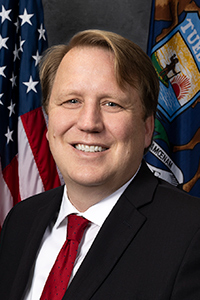LANSING, Mich. — Sen. Aric Nesbitt on Thursday voted to invest $3.34 billion into the state’s water quality and infrastructure. The Protect MI Water plan would largely utilize one-time federal funding to upgrade aging systems and ensure clean drinking water and natural resources for future generations.
“Making sure that Michigan families have access to clean drinking water is one of the most critical public health issues facing our state in recent years; this bill tackles this important challenge head-on,” said Nesbitt, R-Lawton.
Senate Bill 565 would use $2.37 billion in federal funding, $680 million in state resources and $290 million in repurposed state bond funds to improve dam infrastructure and water treatment systems across the state as well as protect groundwater and provide clean drinking water to Michigan homes, schools and businesses.
“One-time funding from the federal government should never be used to grow state government — instead, it should be used to address critical issues that benefit every Michigander,” Nesbitt said. “The Protect MI Water plan will improve the quality of our drinking water and one of our state’s most precious natural resources for generations to come without placing any additional tax burdens on hardworking Michigan residents.”
The bill will spend $1 billion to replace lead pipes and $700 million to upgrade local drinking water and wastewater facilities, $100 million in grants to remove PFAS chemicals from “orphaned” sites, $85 million for filtered water stations in schools, and $50 million to help well owners connect to a community water system or increase their well’s depth if their water has been contaminated or their well fails after a disaster.
SB 565 would also designate $680 million for dam infrastructure, including $650 million for projects prioritizing dam risk reduction, $15 million for emergency response activities by the state where a dam owner fails to pay for necessary work; and $15 million for a grant program for dam rehabilitation or removal.
The bill now heads to the House for consideration.
###

